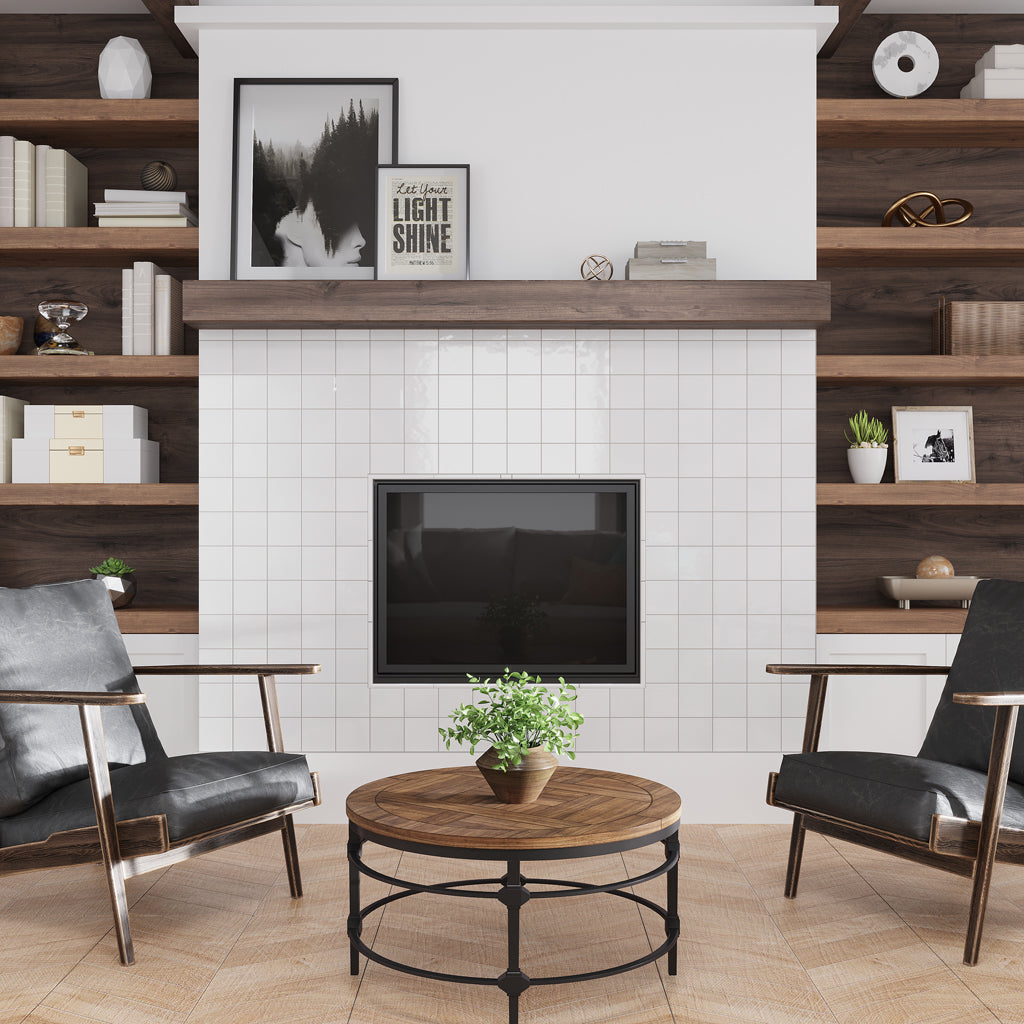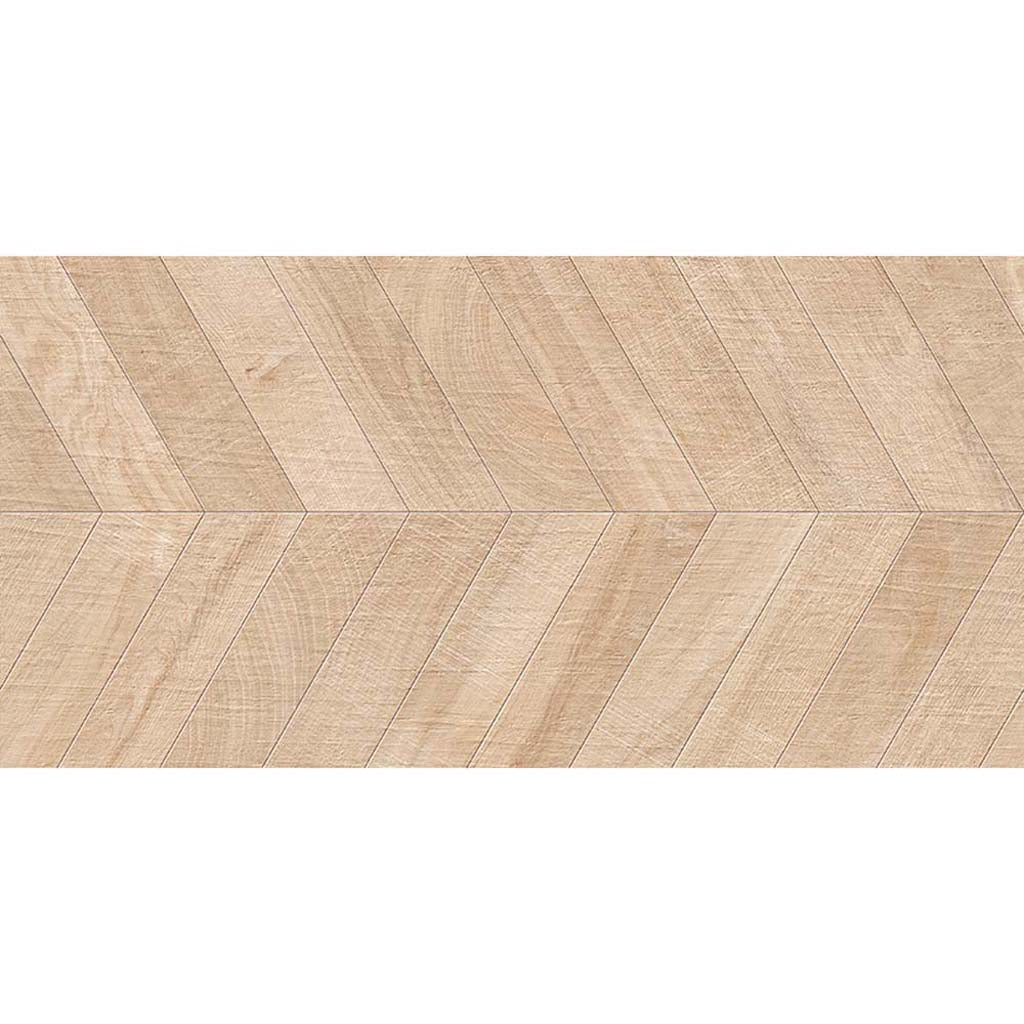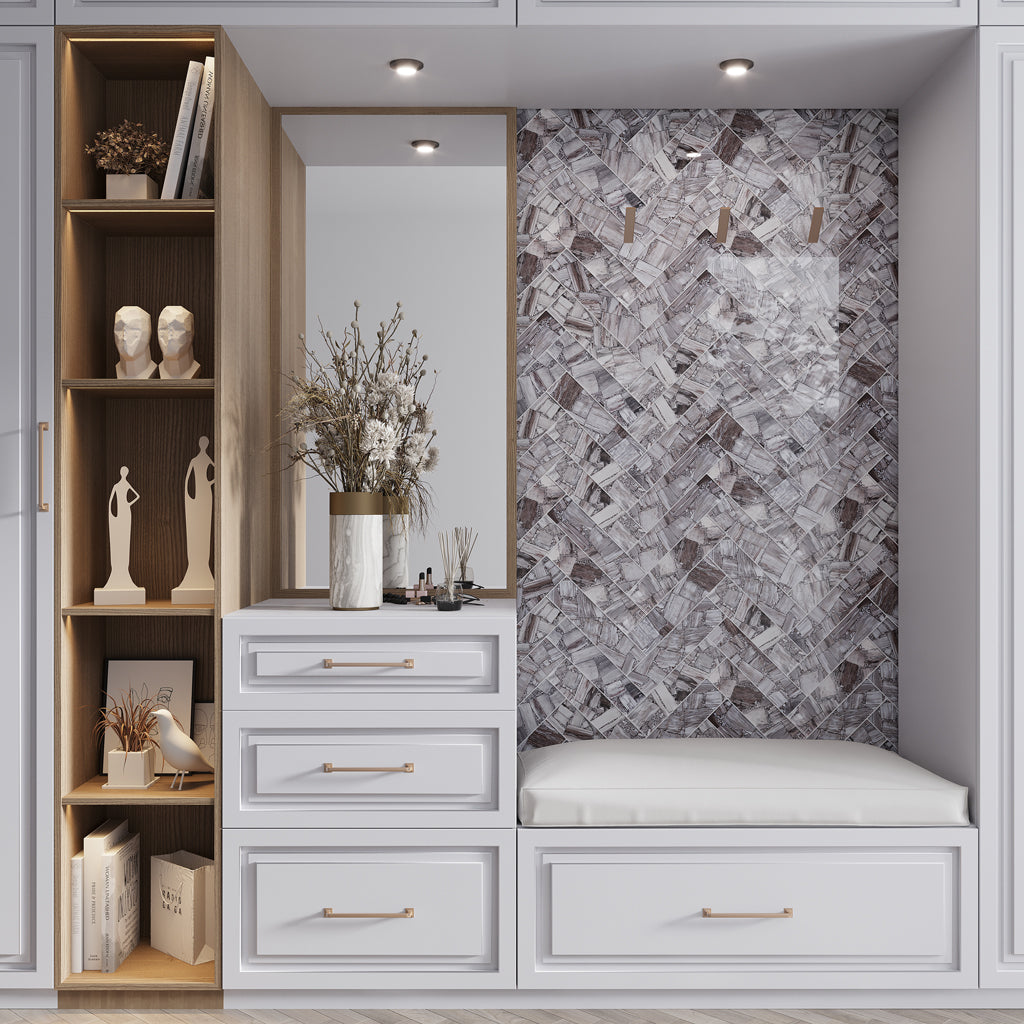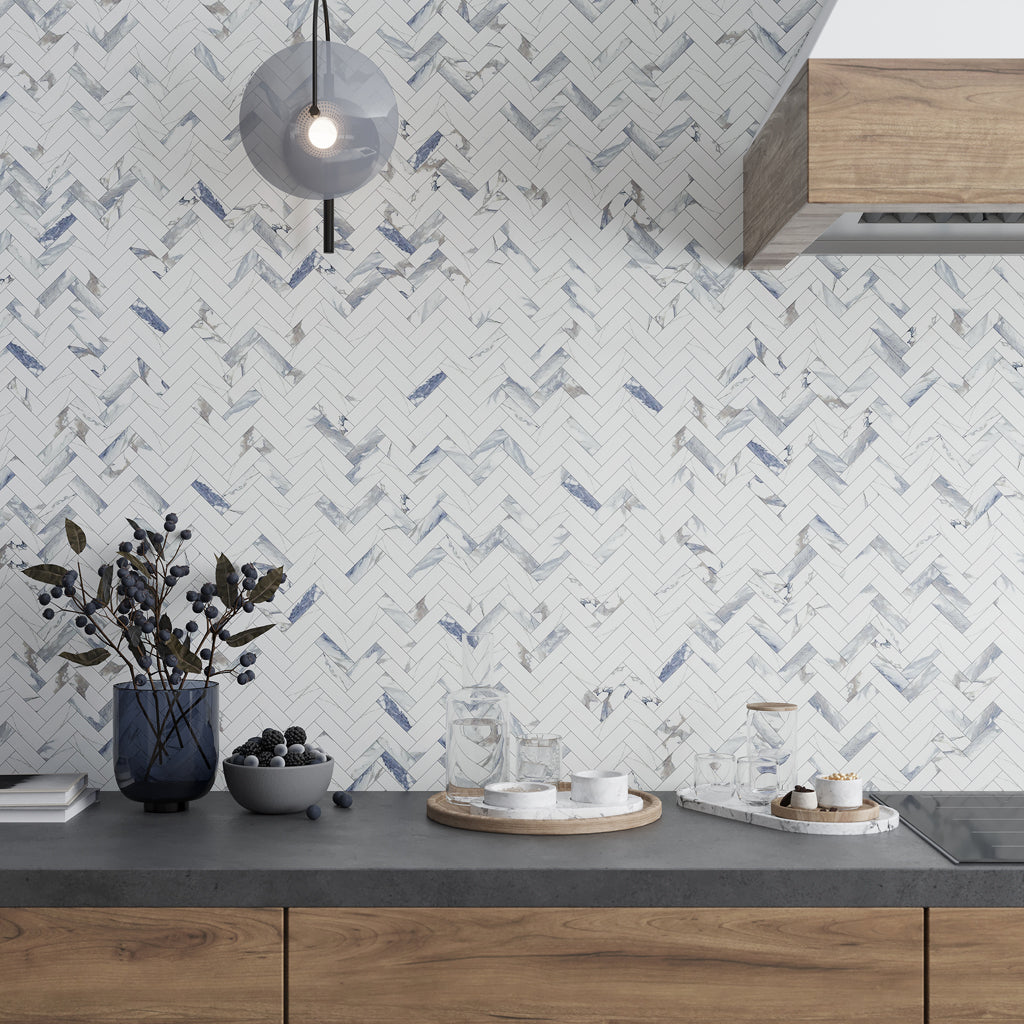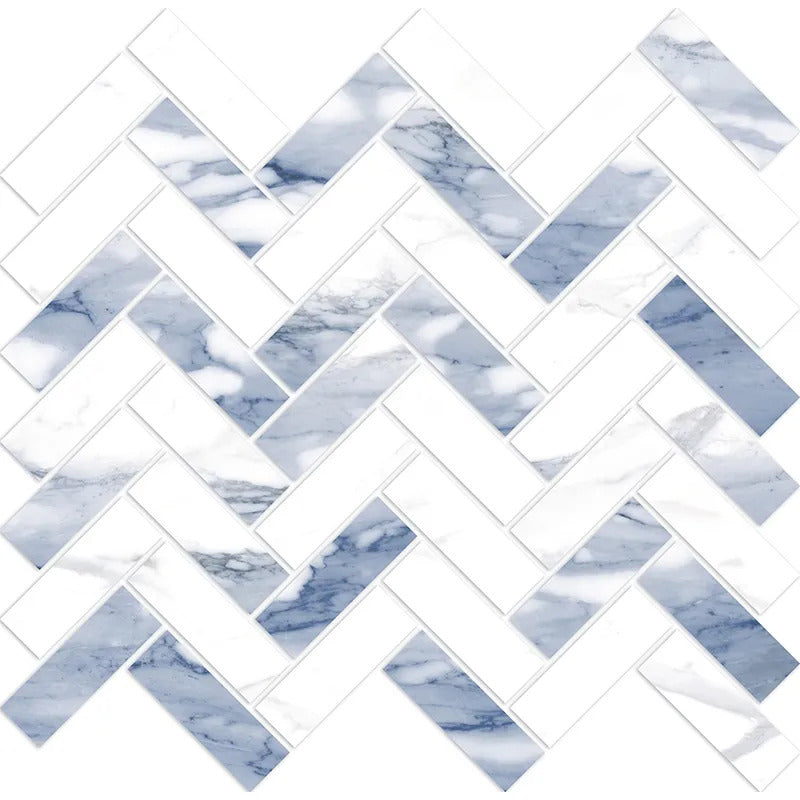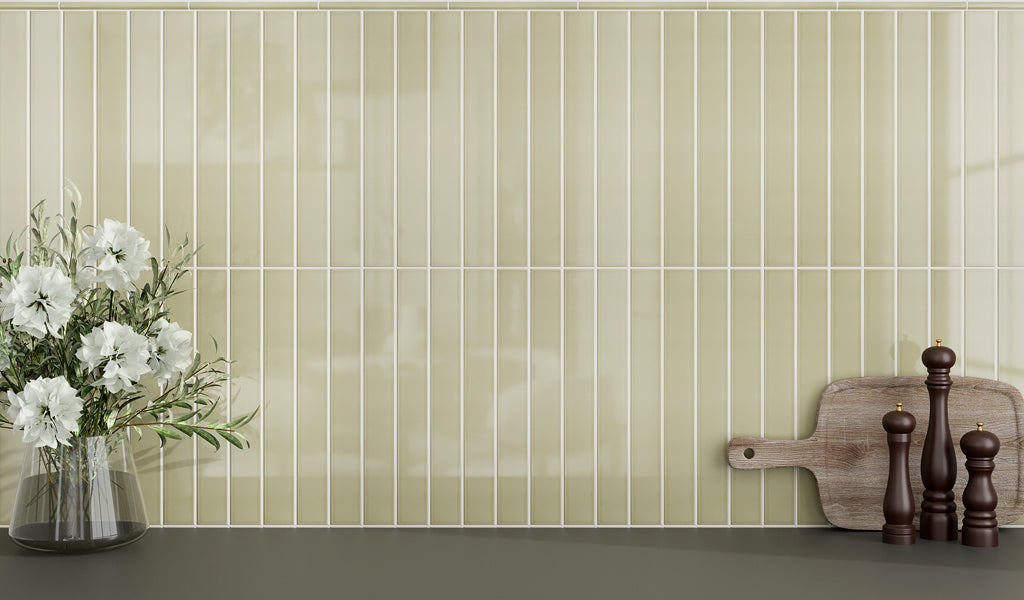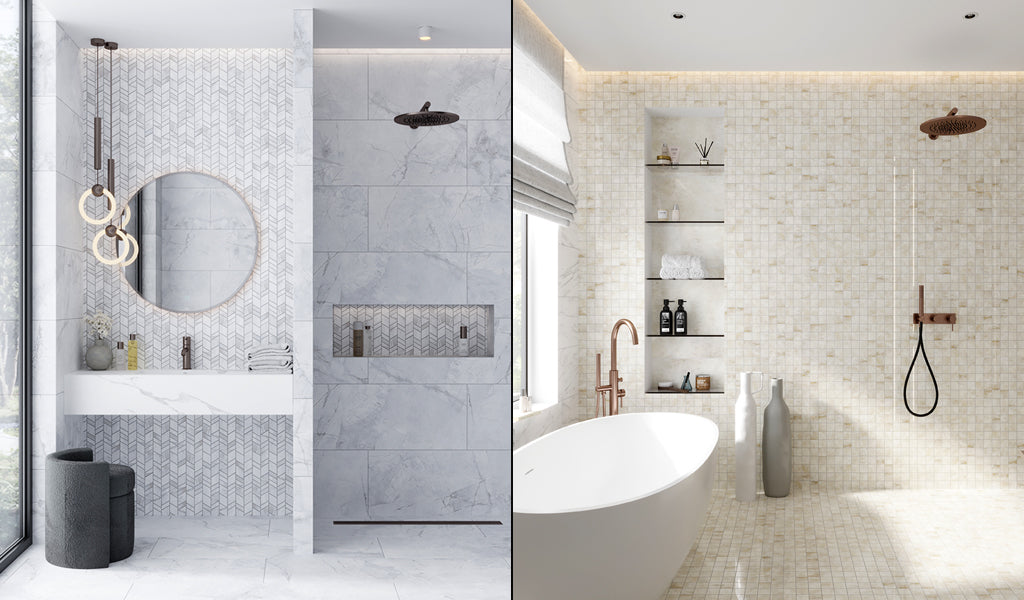Chevron vs Herringbone: Which Tile Pattern is Right for Your Space
Aug 22, 2025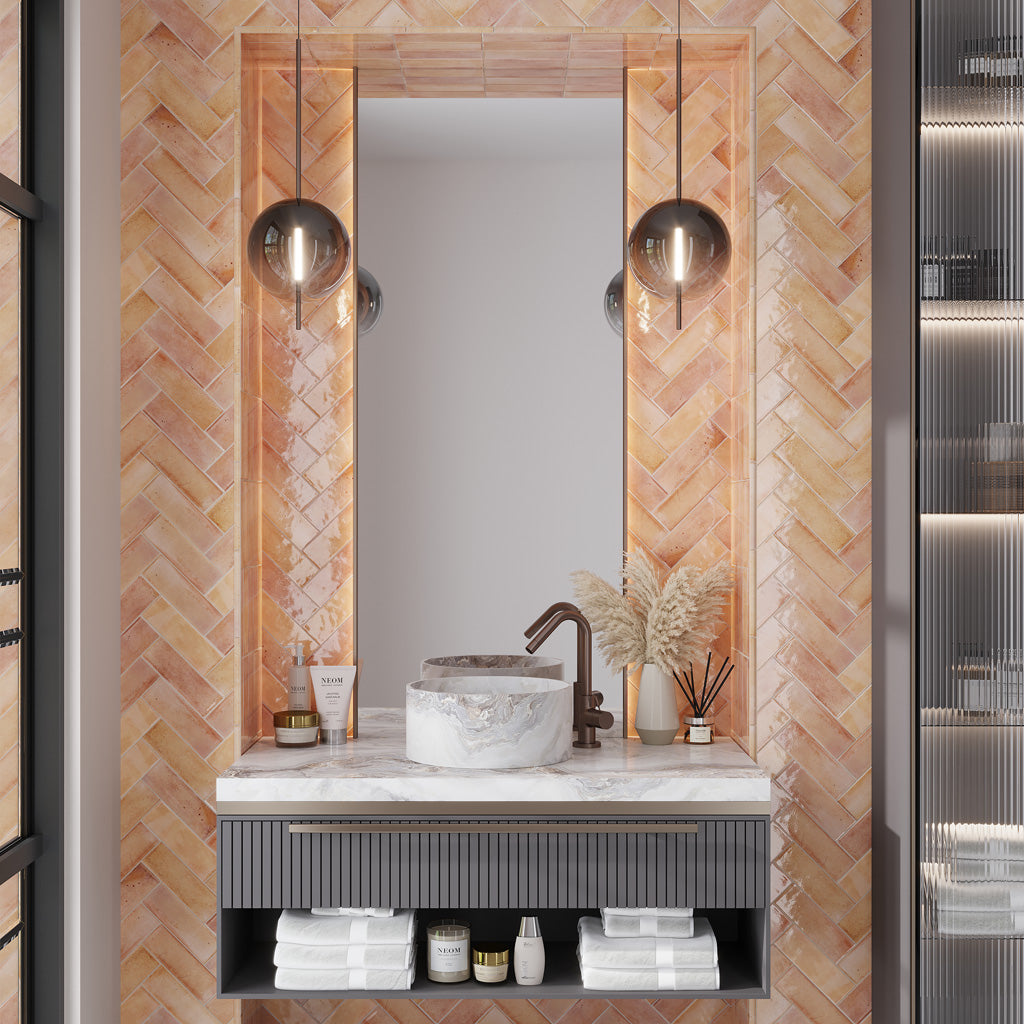
When designing your dream space, it’s often the little details that make the biggest impact. Sure, the style of furniture and all the decorative pieces matter—but have you ever stopped to consider how switching the orientation of your wall or floor tile holds so much power? Welcome to the ultimate style showdown: Chevron vs Herringbone!
Key Takeaways
- The difference between chevron and herringbone comes down to the way the tiles are angled and laid.
- Both patterns work in almost any room and with any interior design style—but each has its sweet spot.
- When using rectangular tile format, herringbone is usually more DIY-friendly, while chevron may require custom cuts and pro installation.
- More grout lines mean more cleaning, but chevron and herringbone are easy to maintain with the right materials.
These two zigzag patterns have adorned the floors of grand homes, palaces, and modern apartments for centuries—adding a layer of depth, craftsmanship, and visual interest. While they may appear similar at first glance, key differences exist in the chevron vs herringbone pattern, with each bringing its distinctive flair. One stands out for its modern geometric punch; the other exudes old-world sophistication. Before you pick a side, you’ll want to know how these intricate patterns stack up in terms of aesthetics, practicality, cost, and upkeep.
Whether you’re planning a bathroom overhaul, giving the kitchen a quick style boost, or just obsessively pinning ideas for a future project, this guide will help you answer the ultimate design question: chevron vs herringbone—who deserves the spotlight in your space? Let’s dive in and explore, pattern by pattern!
| Aspect | Herringbone | Chevron |
|---|---|---|
| Design | Rectangular tiles at 90° angles. Available in pre-mounted mosaic tiles | Rectangular tiles meeting at 45° angles. Available in pre-mounted mosaic tiles |
| Pattern | Broken zigzag design | Repetitive V-shape design |
| Visual Effect | Adds classic appeal and a sense of more space | Adds an invigorating and expansive feel |
| Material | Porcelain, ceramic, marble, glass | Porcelain, ceramic, marble, glass |
| Maintenance | Easy to clean and maintain | Easy to clean and maintain |
Difference Between Chevron and Herringbone
Flooring trends evolve, but chevron and herringbone tile have remained front-runners, earning their spot as the "IT patterns of the moment” in home improvement projects and commercial settings. Choosing between the two can seem challenging, but the results are the same: tiled surfaces that impress, perform, and endure.
So, what’s the difference between chevron and herringbone? It all comes down to the angle and shape of the tile cuts and how each is laid to create its signature look.
1. Herringbone Pattern: Classic, Cozy, and Full of Character

The Herringbone pattern is composed of rectangular tiles cut to the same size. These are laid out in a zig-zag orientation where the end of one tile meets the side of another at a 90-degree angle. The resulting staggered form mimics the bones of the herring fish, which is where it gets its name.
Herringbone tiles are prized for their less rigid, asymmetrical look that complements various design styles. Usually sold in mesh-mounted mosaic sheets, the pattern is fairly easy to apply using 3x6, 2x8, 4x12, 6x36, or 12x24 tile.
2. Chevron Pattern: Sleek, Stylish, and Statement-Making
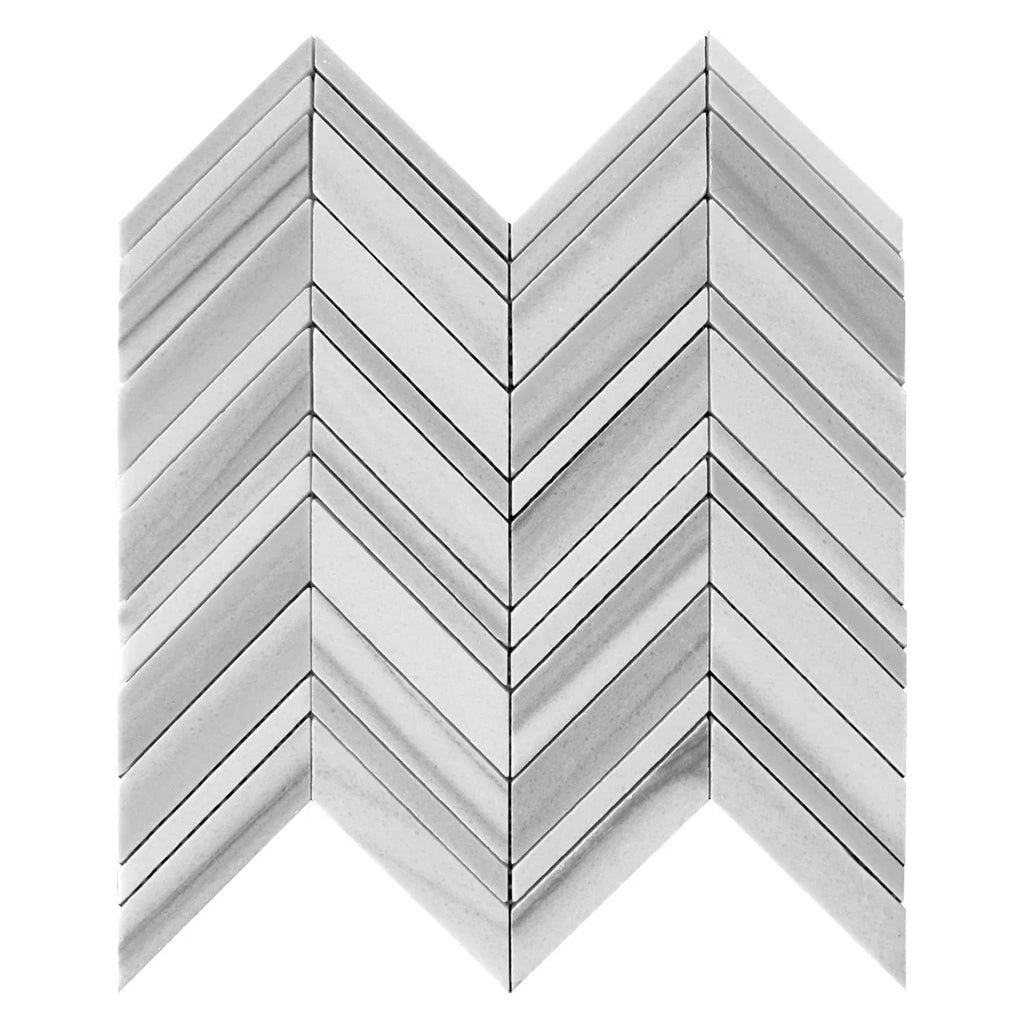
To create a chevron tile pattern, the edges of the rectangle are typically cut at a 45-degree angle (though other angles are possible) and laid end to end to form V-shaped points. The result is a symmetrical layout that resembles uninterrupted arrowheads running the length of the floor or wall.
Like herringbone, chevron tiles are often sold as a pre-assembled pattern fixed to mesh sheets. Standard rectangular tiles need a little bit more finesse work to custom shape a true chevron pattern in situ, which can be time-consuming and labor-intensive.
With these differences, it’s fairly easy to distinguish a chevron vs herringbone pattern. Chevron floor tiles appear sharper due to clean, seamless angles, while herringbone tiles give off a more subdued vibe with a staggered, brick-like effect.
Where Chevron and Herringbone Patterns Work Best
Let’s be honest—if we had it our way, we’d use these iconic geometric tiles everywhere! Living room floors? Yes, please. Powder room walls? Absolutely. Around the bathtub? Don’t mind if we do. Unashamedly all-over! Tile in herringbone pattern or chevron layout works across the board. Both motifs are incredibly versatile, but certain spaces showcase their unique charm more effectively.
The choice between chevron vs herringbone ultimately depends on the tone you want to set and the room in question. A living room floor wrapped in chevron tiles is fantastic for anyone desiring a more spacious and open feel. Its continuous V-shape introduces a strong sense of direction that leads the eye and tricks it into thinking a room is larger than it actually is.
In entryways and hallways, herringbone tiles are sought-after for good reason. They exude a tailored, classic aesthetic with the ability to make a narrow area feel more substantial. Let it be the first thing guests gush over when they arrive! The staggered points draw the eye and create a sense of movement along the entrance area or down the hallway, making it feel more welcoming and elegant.
In bedrooms, where a cozy-meets-stylish feel is desired, either style can work. Chevron would suit a modern, minimalist bedroom, while herringbone lends that comforting “curl-up-with-a-book” vibe to a traditional space.
Set on chevron or herringbone wall tiles in too snug a space, like the powder room or kitchen backsplash? Go for a petite format, like mesh-mounted mosaics to get the full visual impact of the pattern. If you prefer, you can lay either pattern within a border of tiles. That is, surround it with horizontal or vertical tiles that will flow seamlessly into the rest of your space or transition to other areas of the home.
Chevron Pattern Best For:
- Modern interiors: Its symmetrical lines bring contemporary allure to modern interiors.
- Smaller spaces: Chevron’s flow adds depth, width, and height to compact spaces.
Apollo Tile’s Chevron Tiles to Try:
- Bois Chevron 23.77 in. x 47.25 in. Matte Natural Porcelain Rectangular Wall and Floor Tile breathes new life into classic hardwood, blending timeless charm with a fresh, contemporary appeal. The chevron pattern is imprinted on a large-format tile, making it the perfect flooring for a room that feels both traditional and of-the-moment.
- Gray White 13x13 Polished Etched Herringbone Bianco Carrara Marble Mosaic Tile combines different types of marble stone, which creates a dynamic effect that instantly draws the eye. Its directional lines have visual depth, which can lengthen the look of a room and add a style punch to that one blank wall.
Herringbone Pattern Best For:
- Traditional or rustic interiors: It possesses an air of formality that’s especially well-suited for stately areas in traditional, industrial, or rustic-inspired designs.
- Large open floors: Herringbone flooring captures a grand look while adding tactile quality and interest to the scheme of things.
Apollo Tile’s Herringbone Tiles to Try:
- Beige 11x13 Matte Herringbone Recycled Glass Mosaic Tile mimics the grain pattern, lifelike knots, and color variation of hardwood. It’s the perfect option for both historical residences and transitional homes, where it lends a warm, organic feel.
- Made from ceramic to emulate the artisanal charm of Zellige, our Black 2.5x8 Glossy Matte Subway Ceramic Tile comes in a rectangular format that can easily be set in a herringbone pattern. It looks stunning in various settings, be it a country kitchen, an industrial-style living room, or a Mediterranean-inspired bathroom.
Now that we’ve covered the difference between chevron and herringbone, another key decision comes into play: which tile material should you choose? The choice of material can greatly impact the final aesthetics and how easy (or tricky) the installation will be. The good news is, both patterns work with a wide variety of tile types; the decision ultimately depends on what you envision for your space. Below are commonly seen materials used for herringbone and chevron patterns:
1. Ceramic and Porcelain Tile
Ceramic and porcelain tiles in rectangular formats are pattern-friendly with both chevron and herringbone due to their versatility and ease of cutting. Porcelain’s dense and waterproof composition makes it a better option for high-traffic and high-moisture areas, like bathrooms or patios.
And here’s a fun design tip: As with any tile installation, grout color matters, a lot. Want a pronounced design? Opt for contrasting grout to highlight the contours of the pattern even more!
2. Wood-Look Tile
Tile that looks like wood is a popular option for herringbone as it plays into the historical feel of traditional parquet floors. Perfectly sized planks, such as the Beige 6x36 Matte Field Porcelain Tile, can be laid to achieve a high-impact herringbone pattern. If you’re set on chevron, custom cuts are required.
3. Natural Marble Tile
Marble adds opulence to either pattern, especially in upscale bathrooms and kitchens. To simplify installation, both geometric motifs are offered in pre-mounted mosaics.
Pros and Cons of Chevron and Herringbone Patterns
Chevron Pattern
Pros:
- Great for minimalist and contemporary interiors that could do with a graphic punch.
- Continuous, clean V-shape enhances the perception of space.
Cons:
- Rectangular tiles require custom cutting on-site, which may limit material choices.
- Complex to install, requires expert cutting, and typically takes longer to get the job done
- Small errors in cutting and layout are more noticeable once the installation is complete.
Herringbone Pattern
Pros:
- A classic pattern that’s always in vogue and looks great in a variety of materials.
- Introduces a timeless appeal across a variety of interior design styles.
- Easier to install with standard rectangular formats without needing special cuts.
Cons:
- Can make the room look dated if not styled carefully.
- Herringbone pattern can feel slightly busier in small spaces.
- While it’s easier to use standard tiles, the layout still demands careful attention.
Tile Pattern Costs: Chevron vs Herringbone
Planning your budget is important when choosing between chevron pattern vs herringbone pattern. When it comes to cost, herringbone generally has a slight edge in affordability since it uses standard rectangular formats and can skip the custom cuts.
Chevron, on the other hand, often involves tiles that are cut at precise angles. If you're hiring a pro, a high labor fee may occur for either pattern due to the more intricate layout. That said, the payoff is worth it! Both patterns bring so much character if you’re aiming for a high-end, visually striking finish that adds value to your space.
Chevron or Herringbone: What’s Easier to Clean and Maintain?
Good news! Both patterns are easy to maintain if installed correctly. Porcelain, ceramic, or glass tiles in either layout require minimal upkeep, making spills, dust, and daily messes easy to wipe away.
That said, since both chevron and herringbone layouts involve more grout lines than a basic straight lay, you’ll need to give those seams a little extra TLC and be a bit more diligent about cleaning between them, particularly in high-traffic or moisture-prone areas. If you’re set on natural stone like marble, periodic sealing is crucial to enhance durability, make cleaning easier, and prolong the beauty of your tilework.
Conclusion
At the end of the day, the choice between chevron vs herringbone comes down to the look and feel you want for your space and how much installation complexity and cost you’re ready to invest in. Both patterns are timeless and offer a unique essence to the room. Chevron’s bold and modern appeal brings a dynamic touch, while herringbone lends classic elegance with its subtle, textured aesthetic.
So, whether you're diving into a full room makeover or just adding a bit of flair to a small area, pick the pattern that speaks to you and get ready to love the results every time you walk into your home! If you’d like to explore more and find what works best for you, check out our blog: Tile Shapes: A Complete Guide to Beautiful Design.
Frequently Asked Questions:
1. Which works best for floors - chevron or herringbone?
Both layouts are suited for flooring. Chevron pattern tends to give a more modern feel, while herringbone reads as classic and understated.
2. Can I mix both patterns in my design?
Absolutely! Pairing the two adds even more pizzazz to a design scheme. That said, it’s important to keep things balanced and intentional so as not to cause visual overwhelm.
3. Which pattern suits modern interiors best?
Chevron’s clean, sharp lines make it an ideal fit. However, herringbone tiles can work just as well in modern interiors.
4. Which pattern hides dirt and wear better on floors?
The herringbone tile pattern tends to conceal dirt and scuffs on floors better due to its broken, textured layout.
5. Are both patterns suitable for wet areas like bathrooms or floors?
As long as the material used is water-resistant and approved for the area of installation, both patterns are suitable.
6. Which pattern creates more visual movement in a space?
Chevron’s uninterrupted arrowheads create stronger directional flow and visual movement in the space they are installed.

